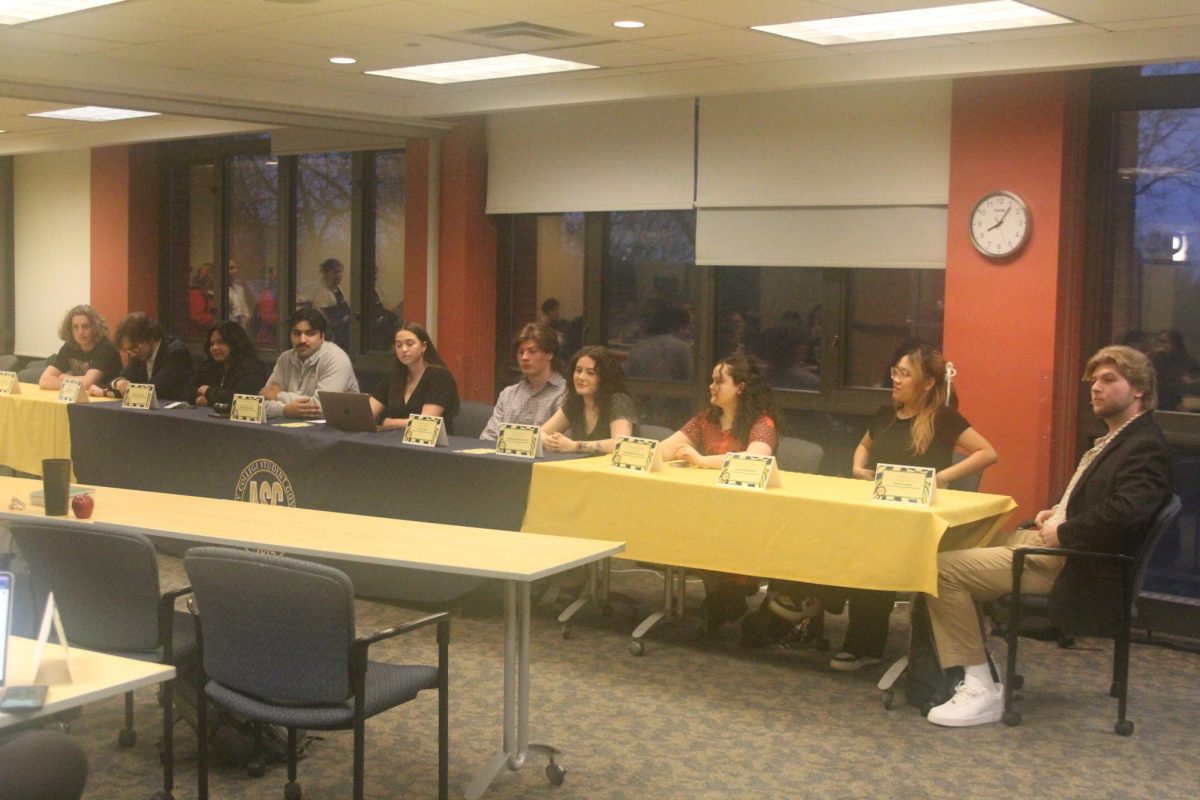By ELAINA MERCATORIS
News Editor
[email protected]
For the fiscal year 2012-2013, Allegheny will increase tuition and decrease the first-year discount rate, following a year with an approximately $800,000 revenue shortfall.
The college lost this revenue due to a two percent increase in the projected discount rate for the bicentennial class in fiscal year 2011-2012, according to the college’s official budget. The discount rate is the amount of need and merit-based scholarships and grants students receive as a proportion of total tuition and fees charged. A higher discount rate corresponds to an average decrease in the share of tuition students must pay.
Last year, the discount rate was increased in order to attract a target number of 600 incoming freshmen, according to Dave McInally, co-chair of the Finance and Facilities Committee.
“We were still short of that target, but once we started to see how the financial aid offers were from other schools, it looked like we were going to be off the target by a lot,” he said.
Then, students and parents called the school, asking for more money, negotiating with better offers from other schools.
“Last year was a clear indication that we’re in a new phase of the entire education market,” said Mike Mehler, McInally’s counterpart.
Although the discount rate was elevated this year, the FFC considered whether an increasing discount rate over time was something the college could sustain.
“The big question we had this year is: Was that an anomaly that is never going to happen again or is this an indication of a trend?” Mehler said.
A short-term solution may be to realign funds to increase the number of merit scholarships, which has not changed recently, according to Mehler.
“We found the type of aid we give away in merit scholarships generates more students who decide to come here, because merit scholarships make you feel wanted,” he said.
Next year, the college plans to pull the discount rate down by 0.5 percent, but that is only a target, Mehler said.
Rachel Vern, a student representative on the FFC, said she does not see raising the discount rate as a viable way in the long term for the college to turn a profit.
“It’s really hard because the way we [determine how much aid a student gets] is based on your parents, and a lot of students don’t get help from their parents,” Vern said. “That would almost have to be a national change because we’re like a business, we compare to every college out there. As a business, I don’t think we can increase our discount rate.”
Regardless, the all-student discount rate will still increase over two percent next year because the discount rate for graduating seniors is much lower than the projected rate for incoming freshmen. Sheryl Proper, associate vice president for enrollment and financial aid, said this is because the higher discount rate will stay with students throughout all four college years. As a result, she said, the all-student discount will continue to increase.
As the FFC looks to the long-term future, McInally said student need is paramount.
“The most important issue is demand now,” McInally said. “How many prospective new students are there and how badly do they need the money?”
For McInally, increased contribution to the endowment through donations is the most effective way to generate funds for the college.
“Our sustainable long-term strategy is all about increasing the size of our endowment,” McInally said.
Allegheny’s endowment is lower than comparative private colleges such as Denison University, Kenyon College and the College of Wooster.
An increase in the endowment could decrease student costs. If the endowment does increase, using those funds for student aid will still be a gradual process, according to Mehler.
“The idea is that you pull a little bit from the endowment and leave some in the endowment so it continues to grow on its own,” he said.
After the college’s loss of revenue last year, money set aside in the contingency budget helped cover the $800,000 shortfall, in addition to saving money on utilities because of Allegheny’s energy initatives, Mehler said.
“While we’ve got less revenue, we also have fewer expenses in some areas and with the contingency overall, we came out okay,” he said.
The loss of revenue resulted in three vacant positions being terminated, in addition to small budget cuts in various departments.
Regardless, issues surrounding the discount rate and tuition increases will continue to be a part of national conversation, said Proper.
“The desire to decrease financial aid discount, while continuing to recognize merit through academic scholarships and access through need-based grants, is definitely a challenge for institutions,” Proper said. “We will continue to monitor and participate in national dialogue about higher education policy and the cost of education to identify a more sustainable solution.”






